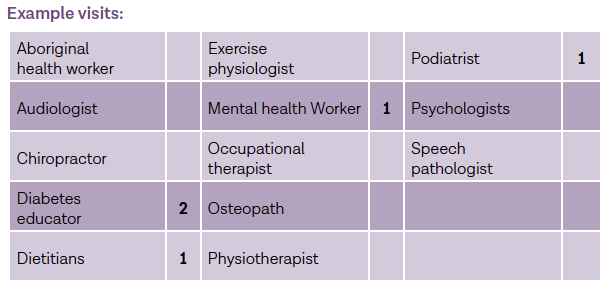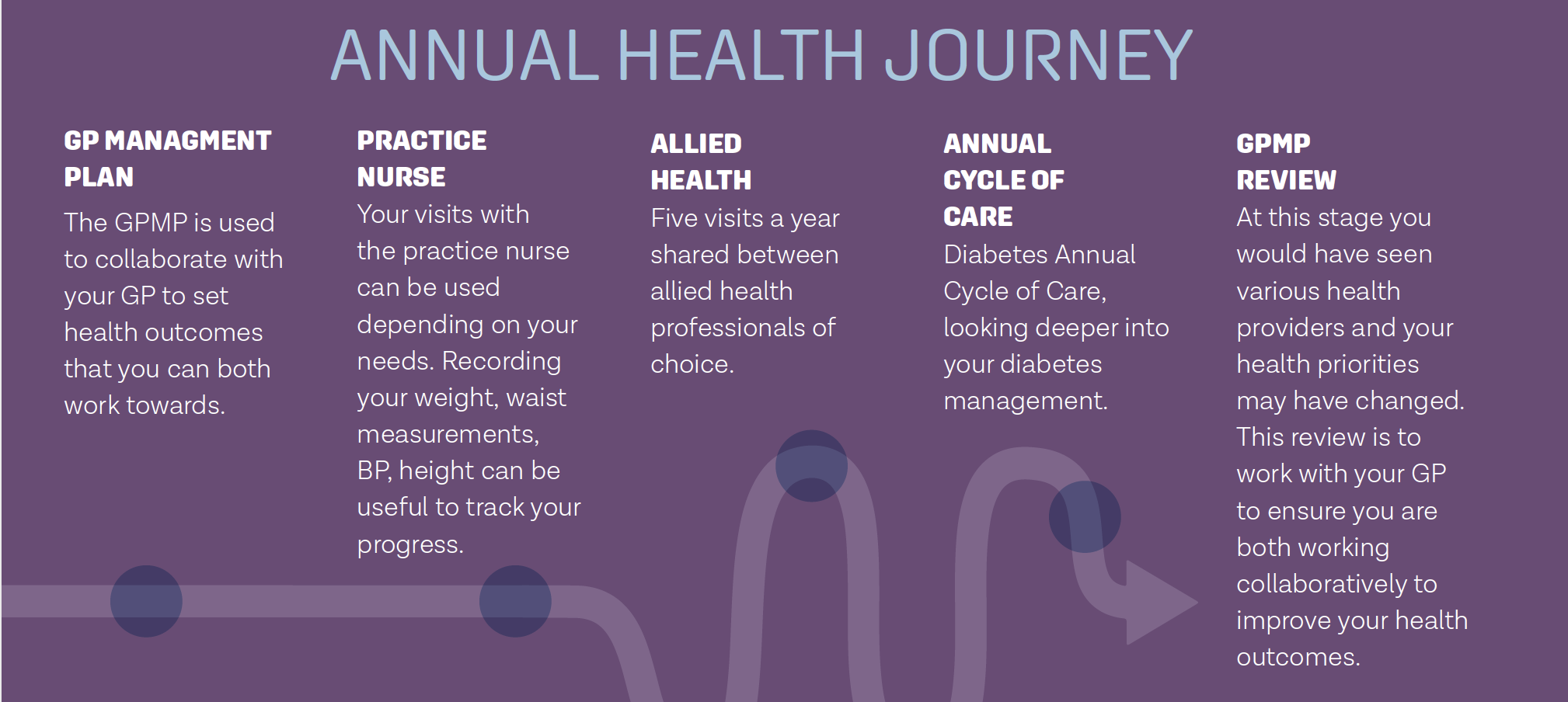Confused about how to get started looking after your health? KASI KEEFFE explains the ins and outs of a GP care plan.
A GP care plan – or general practice management plan (GPMP) – is an individualised plan made with your GP to help manage a chronic condition. These plans can also be known as care plans, chronic disease management plans or GPMPs. They provide an organised approach to your health, created with your GP and practice nurse to identify your unique health care needs.
If you are needing more then two or more health professionals, your GP may also suggest a Team Care Arrangement (TCA). This plan involves your GP collaborating with at least two other healthcare providers who will give ongoing treatments or services to you.
Having a GPMP and TCA enables you to receive Medicare rebates from certain allied health providers. It is up to you and your GP to determine which provider is most relevant to your care. You get a total of five visits per year rebated by Medicare. Your health care needs will determine how these visits are spread across the allied health professionals.

These visits will be subsidised by Medicare, depending on the individual healthcare provider, and the out of pocket costs may vary. Throughout the year, your health care needs may change, and your GP management plan should reflect these changes. The practice nurse can also see people who have a care plan for an additional five visits per year subsided by Medicare. These visits can be used to keep you on track or for further education that may be needed. The GPMP should be reviewed every three months to ensure the plan reflects your current health needs.
Your GP Management Plan
Developing your plan with your GP will ensure that you are set for the year. During this initial consultation, you can expect to arrange blood tests and a Team Care Arrangement (TCA), if needed. After this consultation, you may find it beneficial to see the practice nurse to discuss your personal goals and record any biometric data you want to observe.
If you have a TCA, organising your allied health appointments would be next. Prior to getting your TCA it is important to look around at which health professionals are in your local area and what their fees and services might be. Most allied health associations have ‘find a provider’ located on their website.
The Diabetes Annual Cycle of Care should then be completed with your GP. At this stage you should have the relevant blood tests and biometric data to complete the annual cycle of care. During this appointment the GP will look deeper into your diabetes management. See the NDSS Annual Cycle of Care fact sheet to understand what this test is all about.
At this stage you will be ready to have your care plan reviewed by your GP. Use this time to reflect on your progress or plan to start your care plan. These reviews are designed to ensure you and your GP are continuing to collaborate to reach your health goals.
Depending on your age and ethnicity you may also be eligible for an annual Health Assessment which is completed by your GP and the practice nurse. This assessment is a top to tail assessment of all your physical, social and emotional health needs.
Checklist for ensuring you are getting the most out of your health care
- Linking in with Medicare and NDSS effectively.
- Personal and bank details are up to date.
- All healthcare providers (including pharmacies) have your current Medicare, Concession and NDSS card numbers registered.
- Ensure your Health Care Card is updated on prescriptions and the NDSS (speak to your pharmacist).
- Using the ‘Closing the Gap’ scheme on prescriptions for Aboriginal and Torres Strait Islander people.
- Speak with your pharmacist about whether you may be eligible for the medication Safety Net subsidy. Visiting the same pharmacy regularly will assist with this.
- Find a doctor that suits your needs. Although many GPs are going to private billing some may still bulk bill which can remove a huge financial burden. Continuity of care with a person-centred GP is very important.
- Making the most of your time in your appointment, ensure you are booking the correct length appointment. The general appointment time would be for scripts, BP checks or single issues, everything else would need a long appointment including the GPMPs and other assessments.





